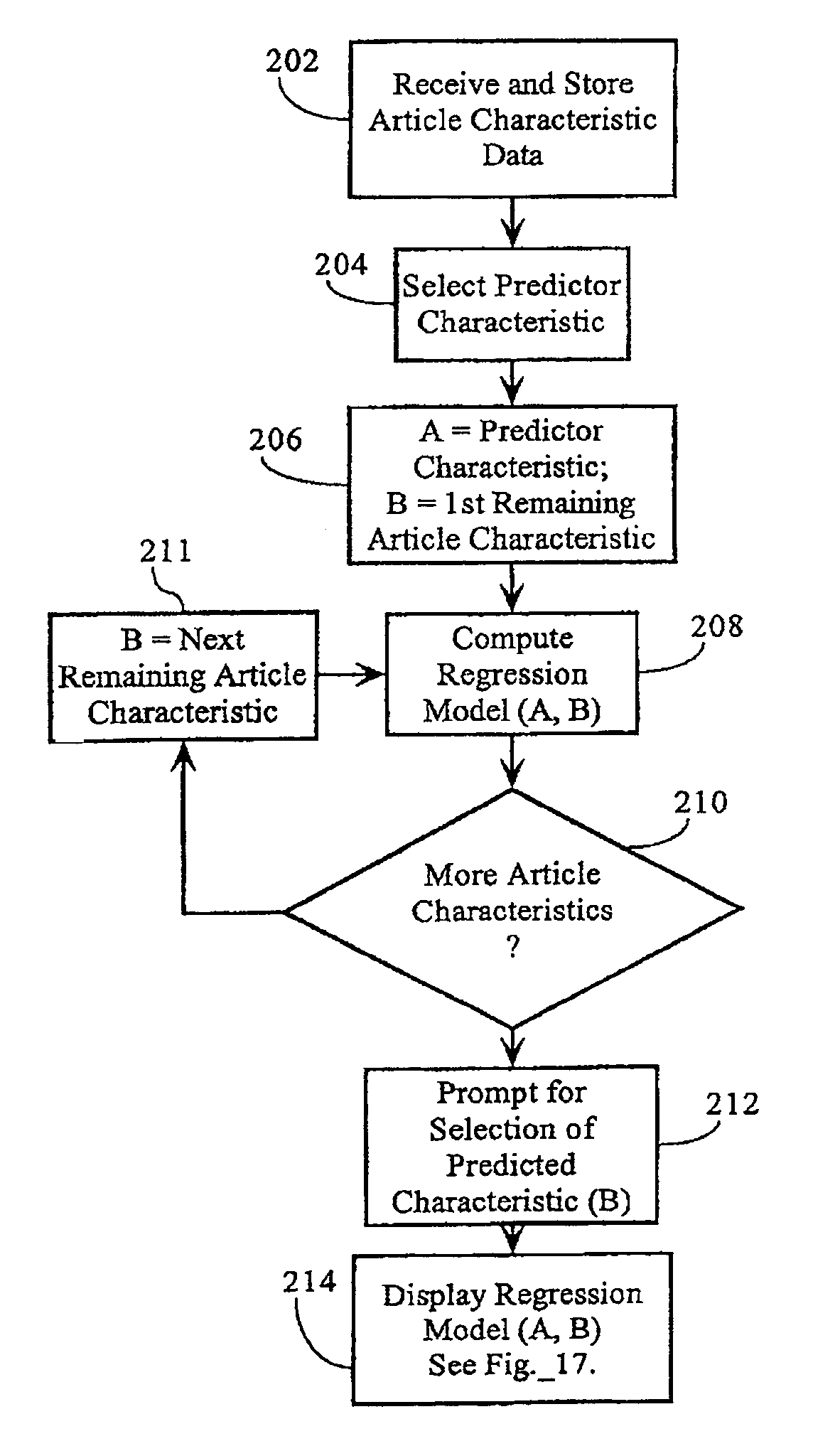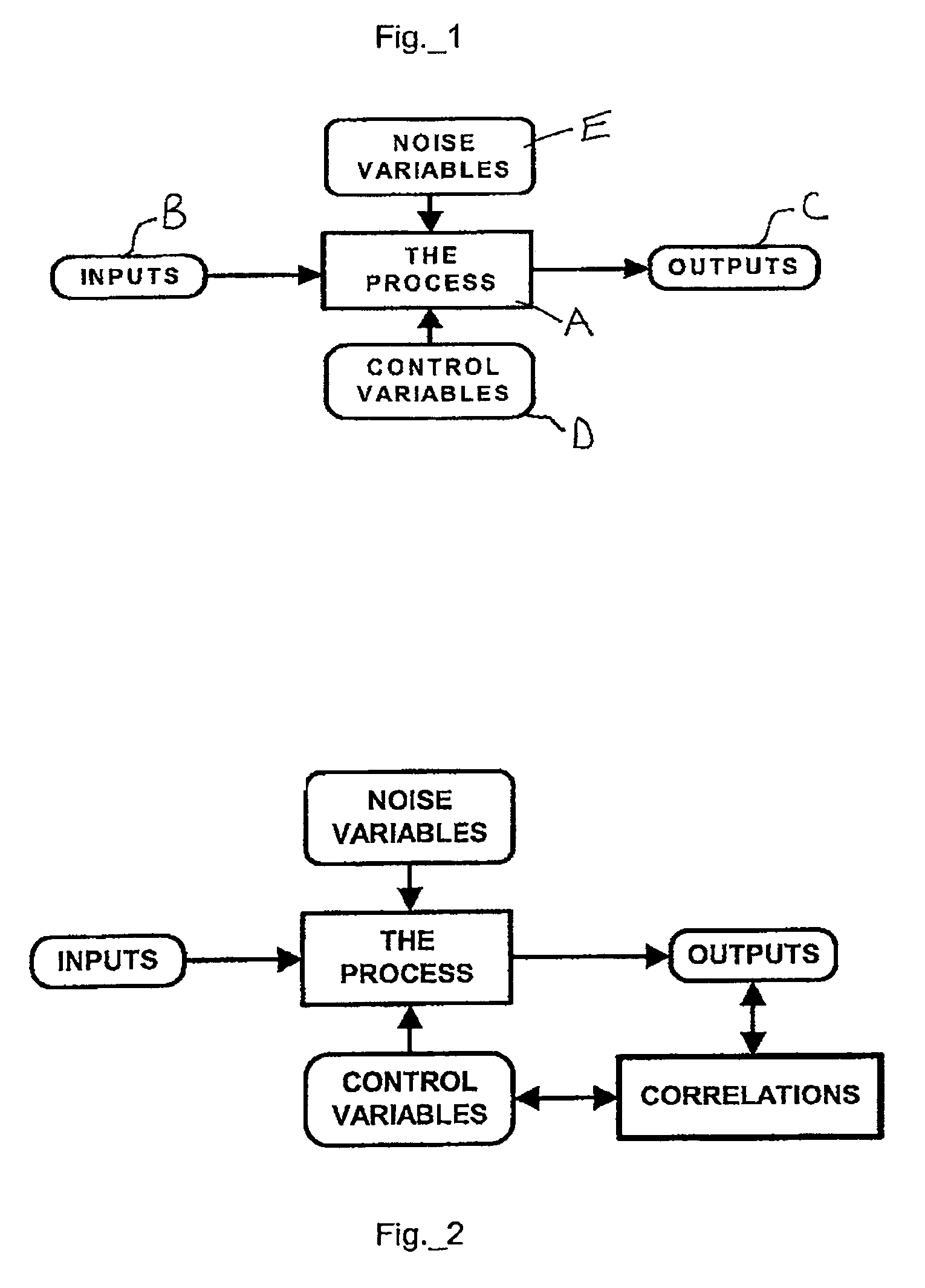Manufacturing design and process analysis and simulation system
a simulation system and manufacturing technology, applied in the field of manufacturing design and process analysis and simulation system, can solve the problems of complex interactions and non-linearities, inability to determine the relationship, and inability to achieve the effect of linearity,
- Summary
- Abstract
- Description
- Claims
- Application Information
AI Technical Summary
Benefits of technology
Problems solved by technology
Method used
Image
Examples
Embodiment Construction
I. Background and Operating Principles
A. Principles and Concepts
[0079]The present invention utilizes several graphical, statistical and mathematical techniques directed to analyzing the relationship between article characteristics to achieve a novel design and manufacturing process analysis system. Among these are scatter diagrams, correlation coefficients, coefficients of determination, linear, non-linear and multi-variate regression, prediction intervals, adjusted prediction intervals, prediction using regression, prediction using prediction intervals, DOE, averages and weighted averages. FIG. 3 is a process diagram illustrating how an aspect of the present invention differs from prior art techniques. In a wide variety of manufacturing processes, and injection molding in particular, there is often a strong relationship between article characteristics resulting from a given process. The present invention assesses the statistical strength of these relationships and, when they are su...
PUM
 Login to View More
Login to View More Abstract
Description
Claims
Application Information
 Login to View More
Login to View More - R&D
- Intellectual Property
- Life Sciences
- Materials
- Tech Scout
- Unparalleled Data Quality
- Higher Quality Content
- 60% Fewer Hallucinations
Browse by: Latest US Patents, China's latest patents, Technical Efficacy Thesaurus, Application Domain, Technology Topic, Popular Technical Reports.
© 2025 PatSnap. All rights reserved.Legal|Privacy policy|Modern Slavery Act Transparency Statement|Sitemap|About US| Contact US: help@patsnap.com



